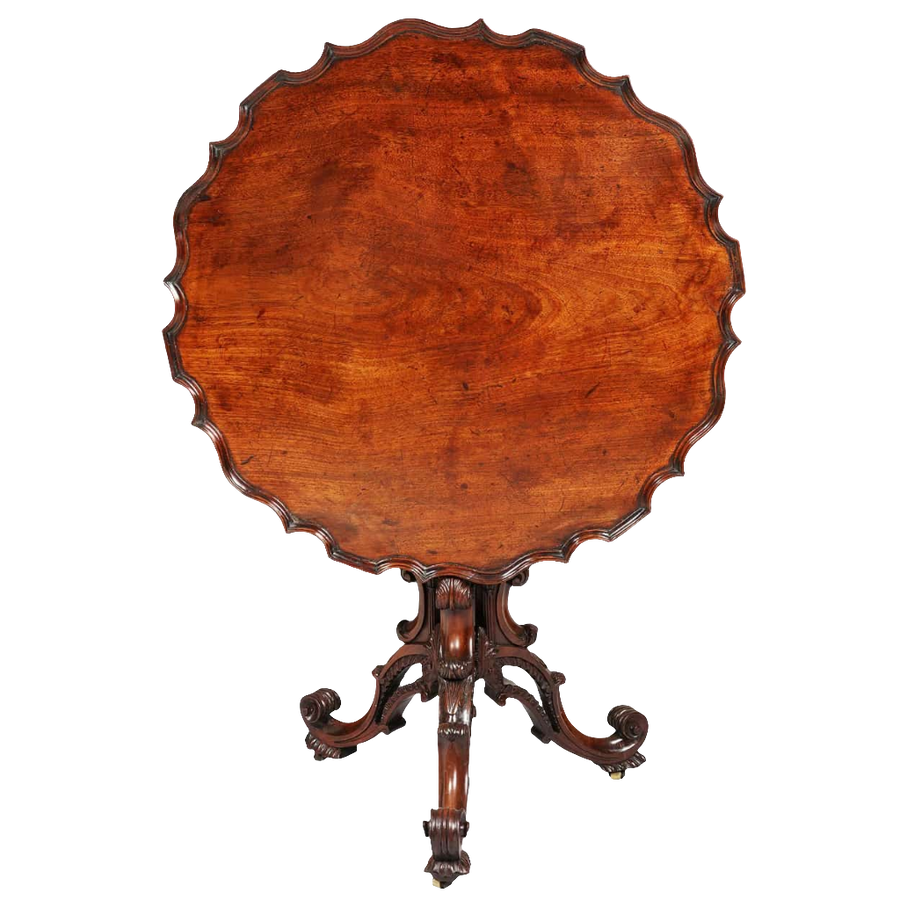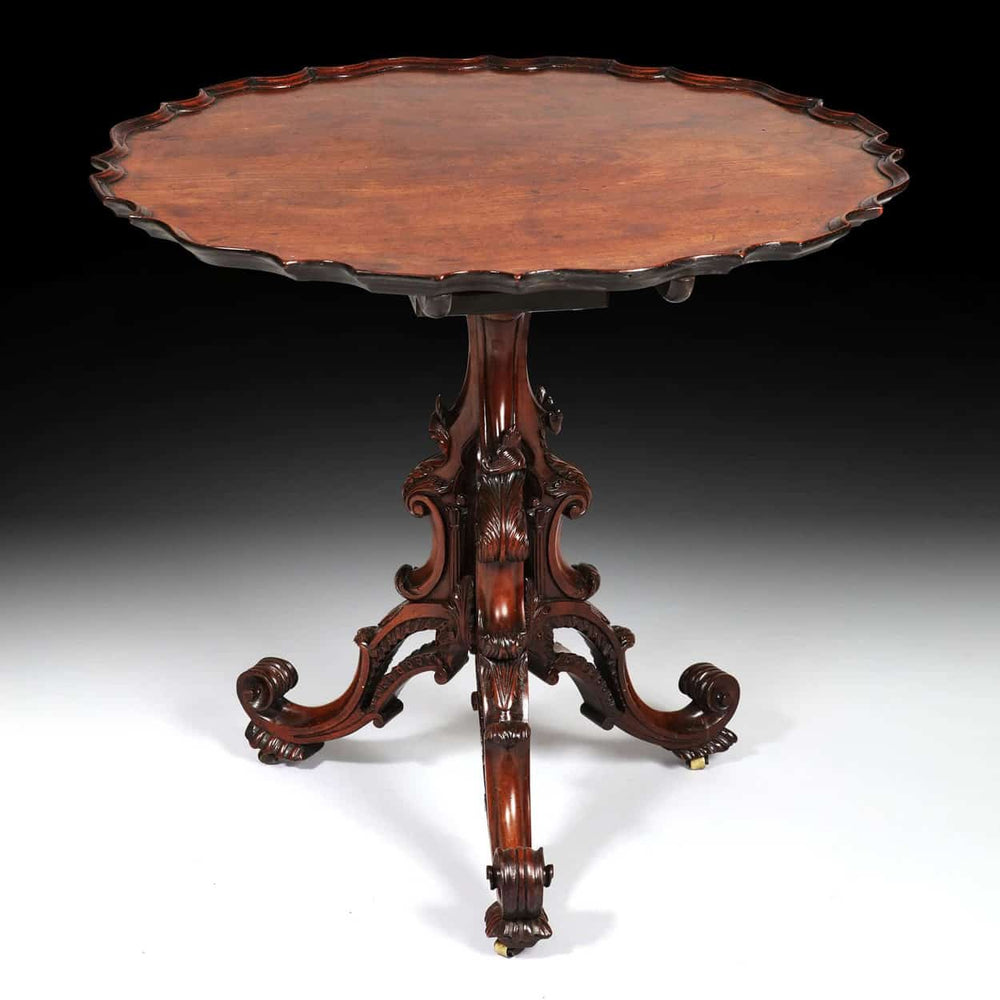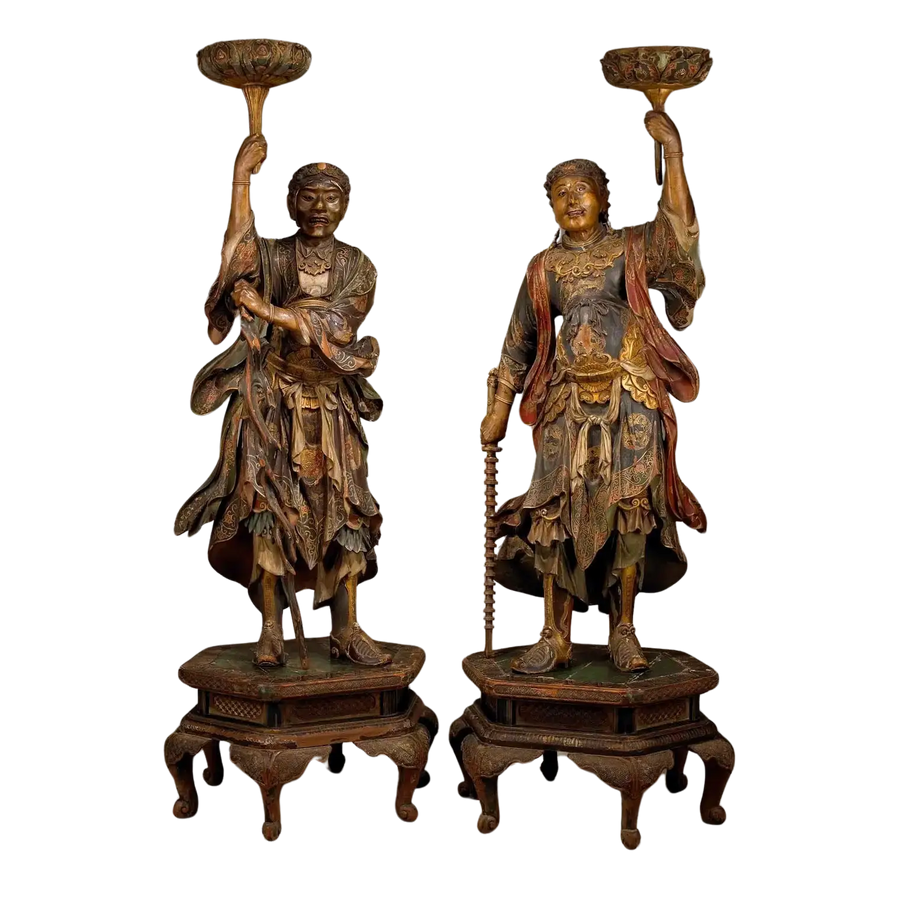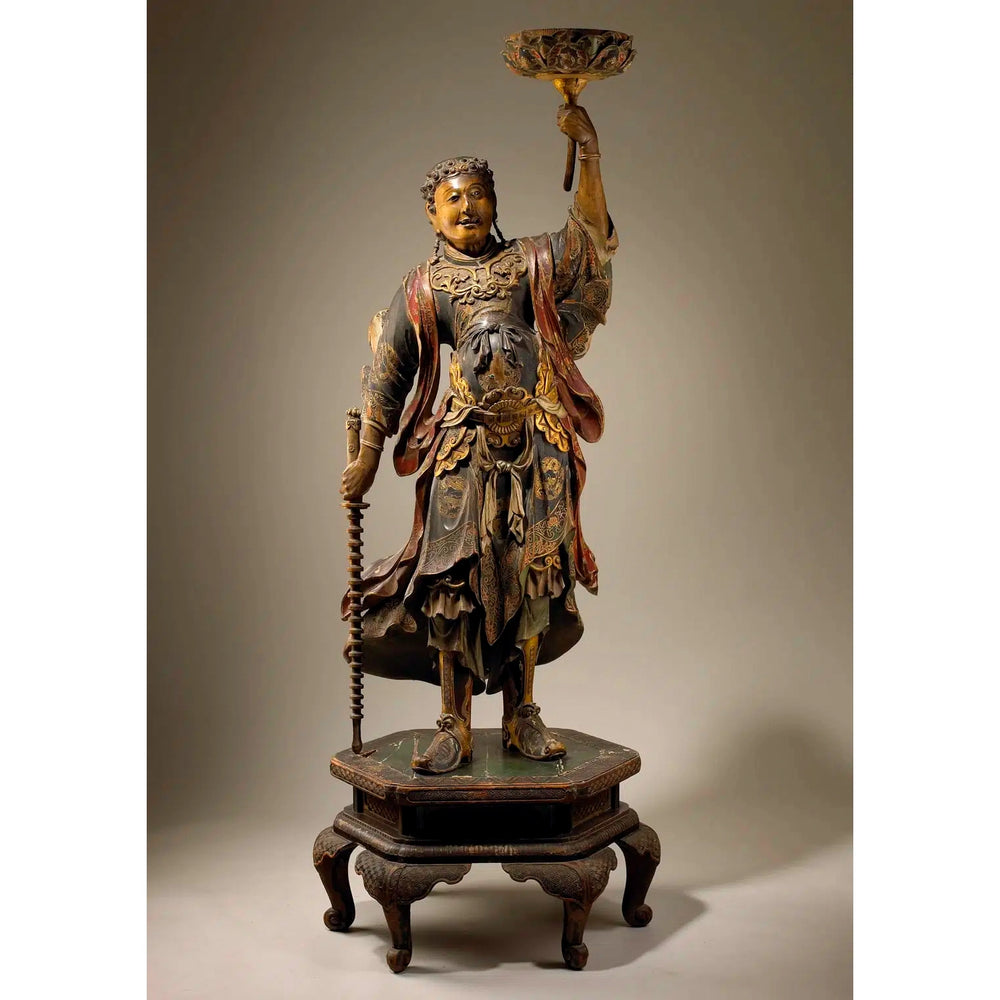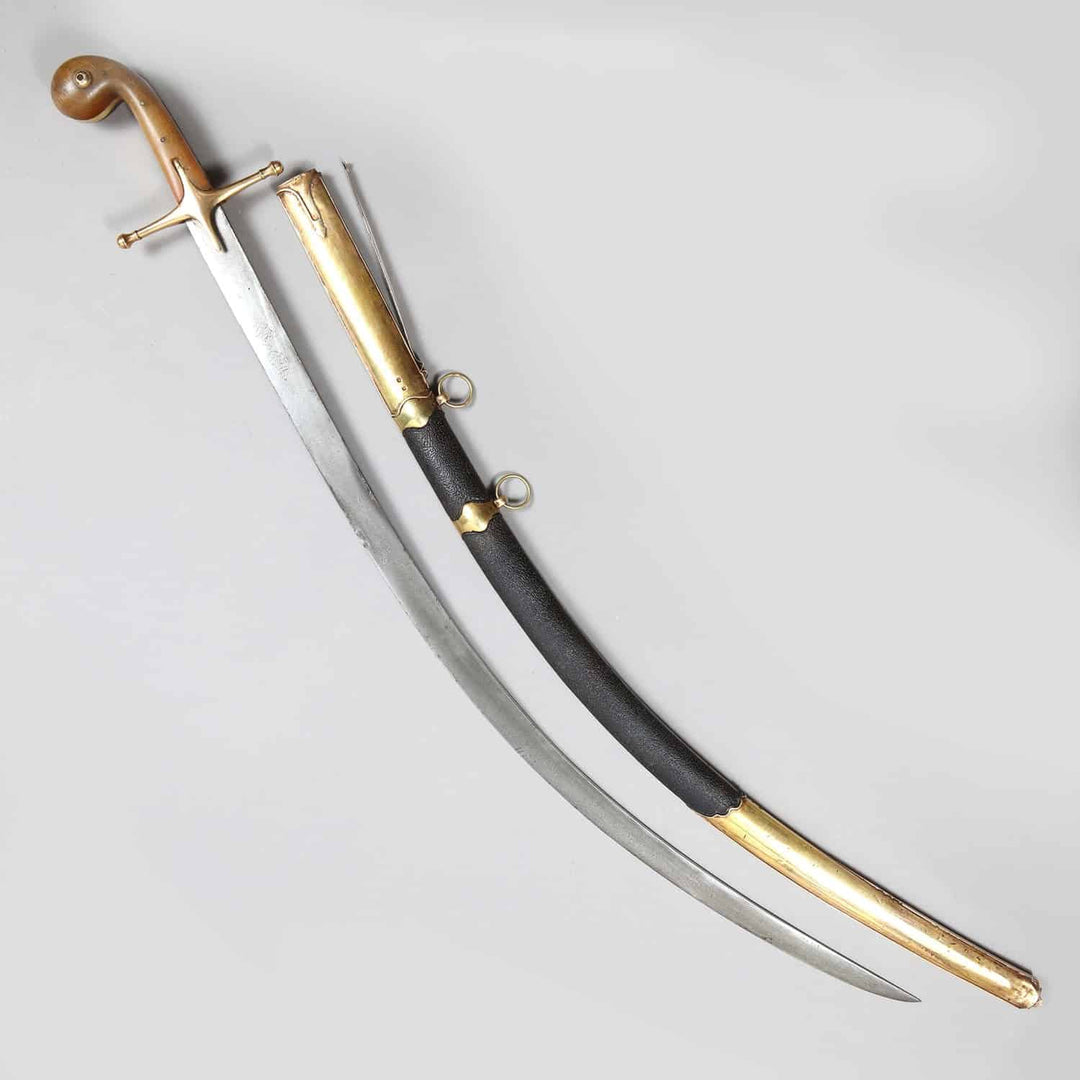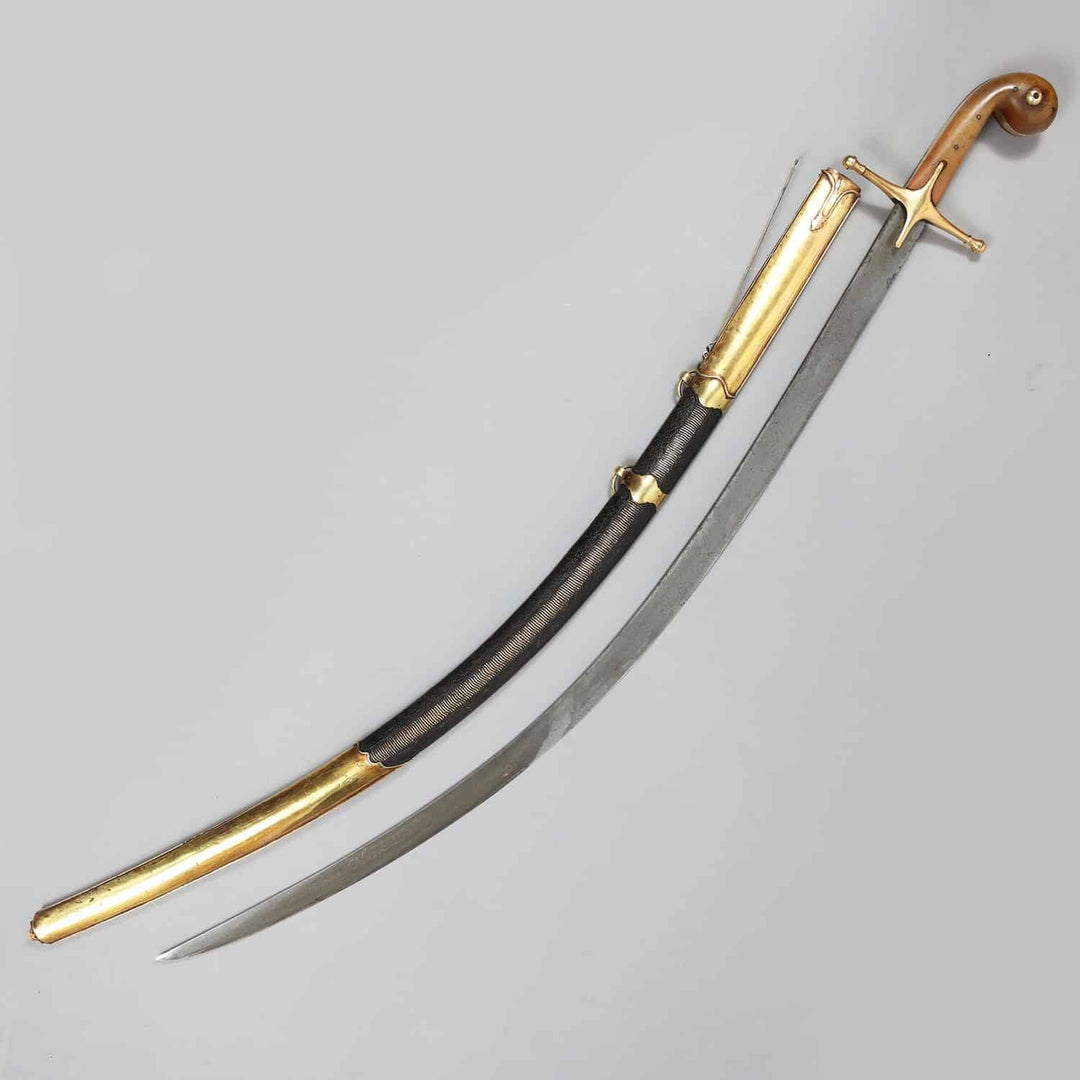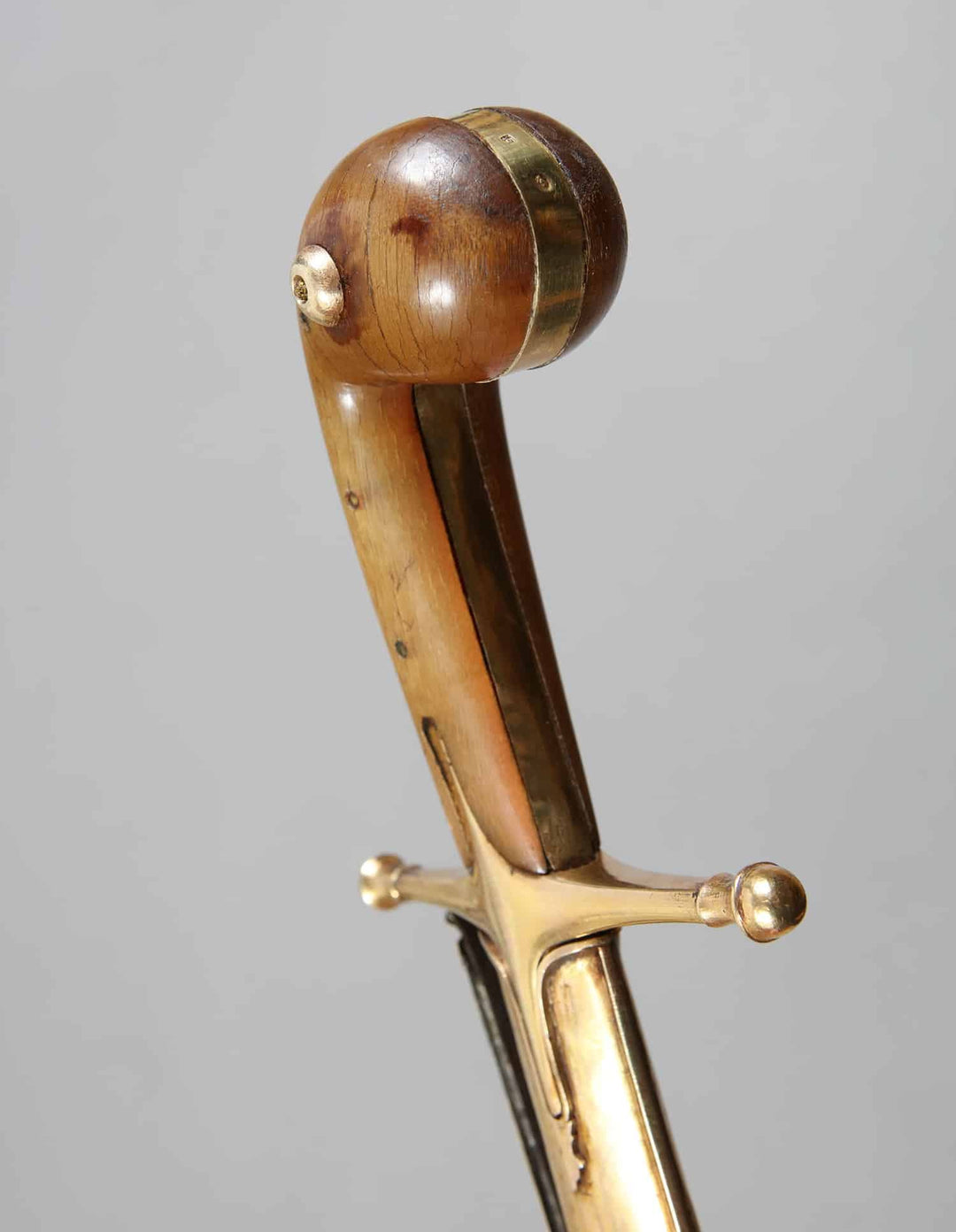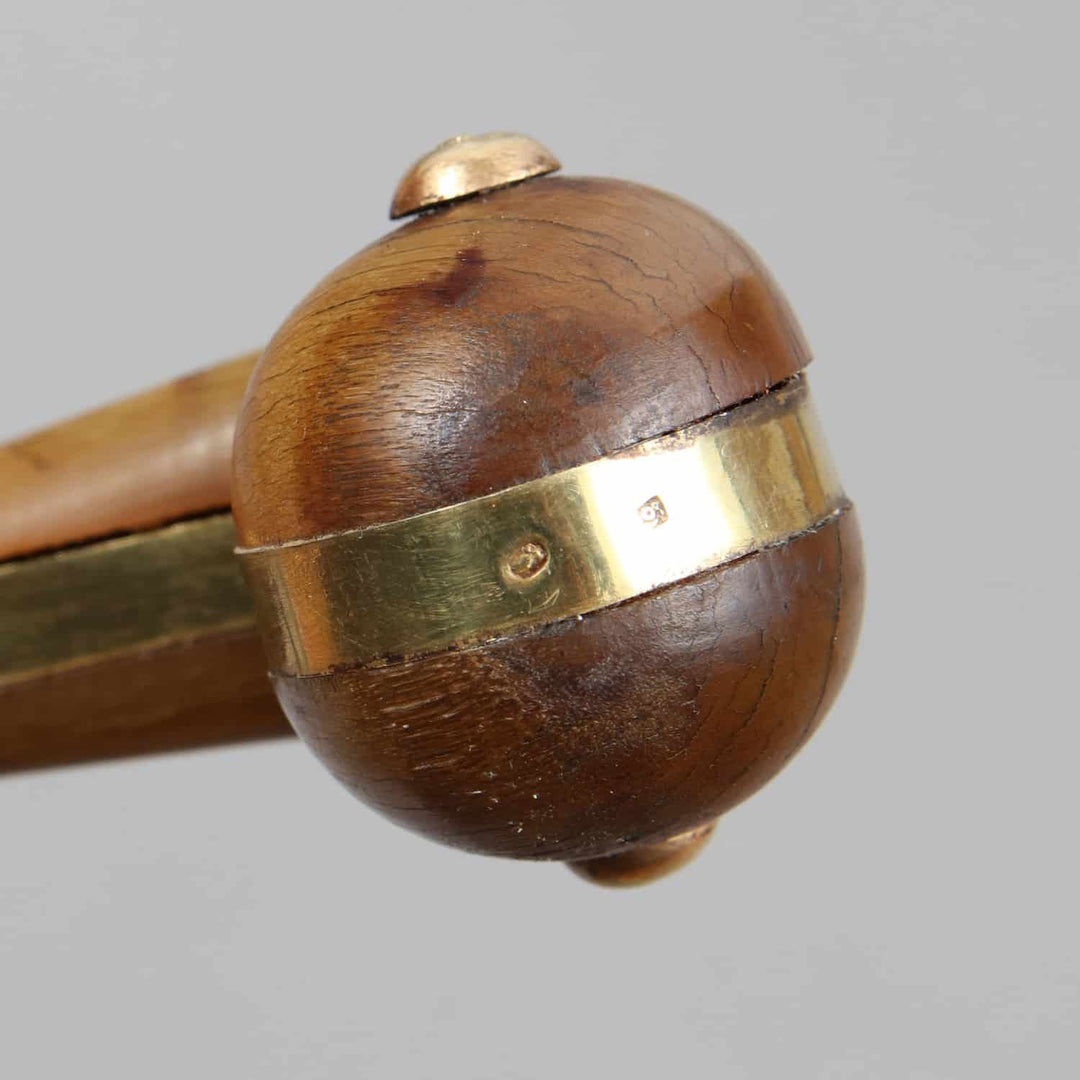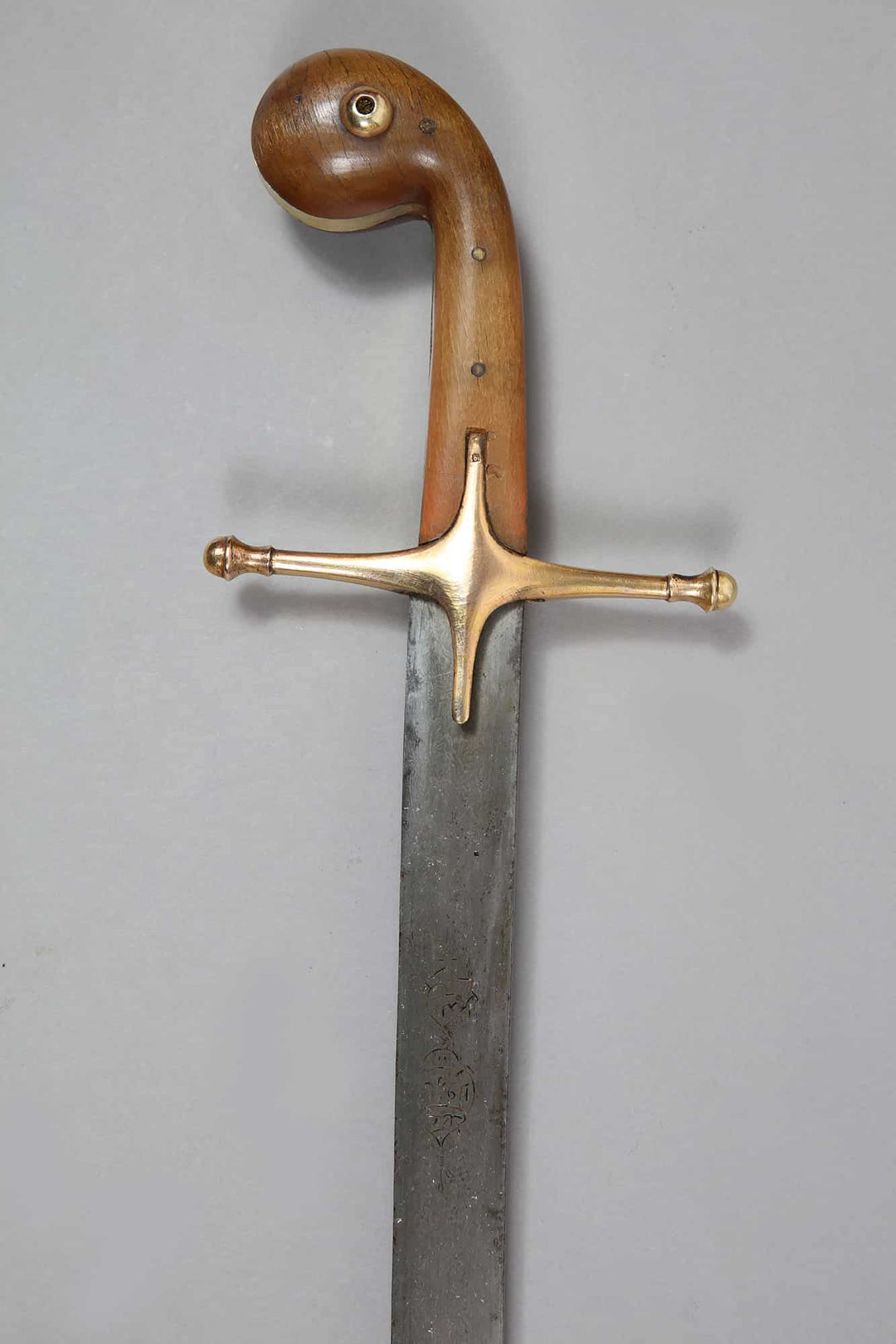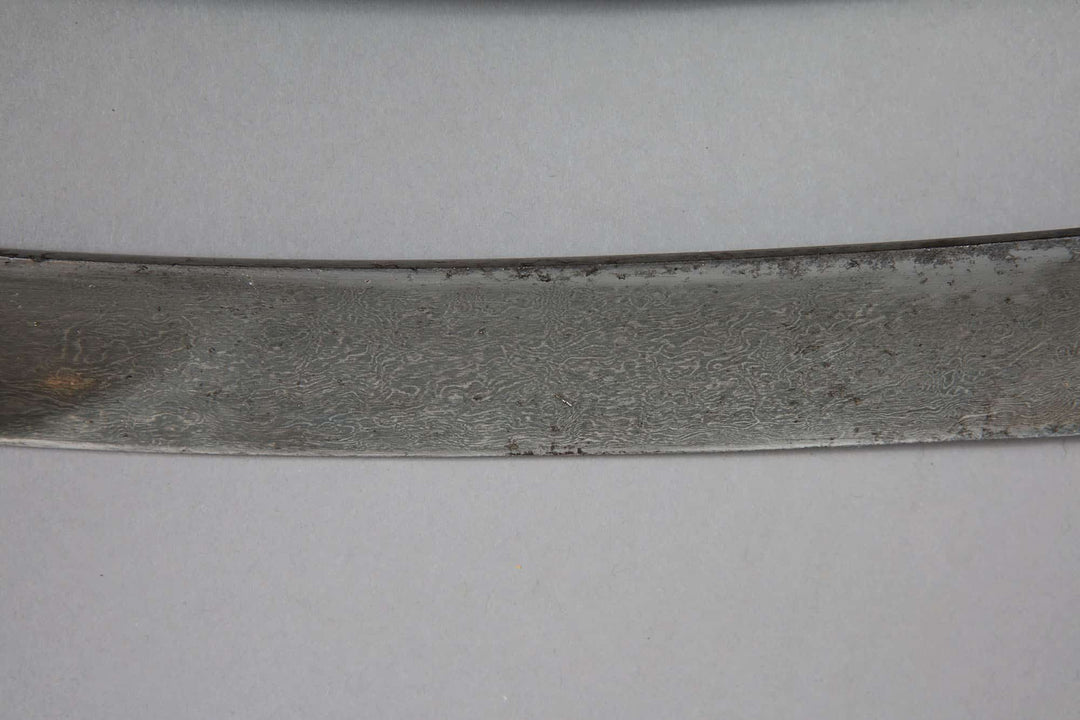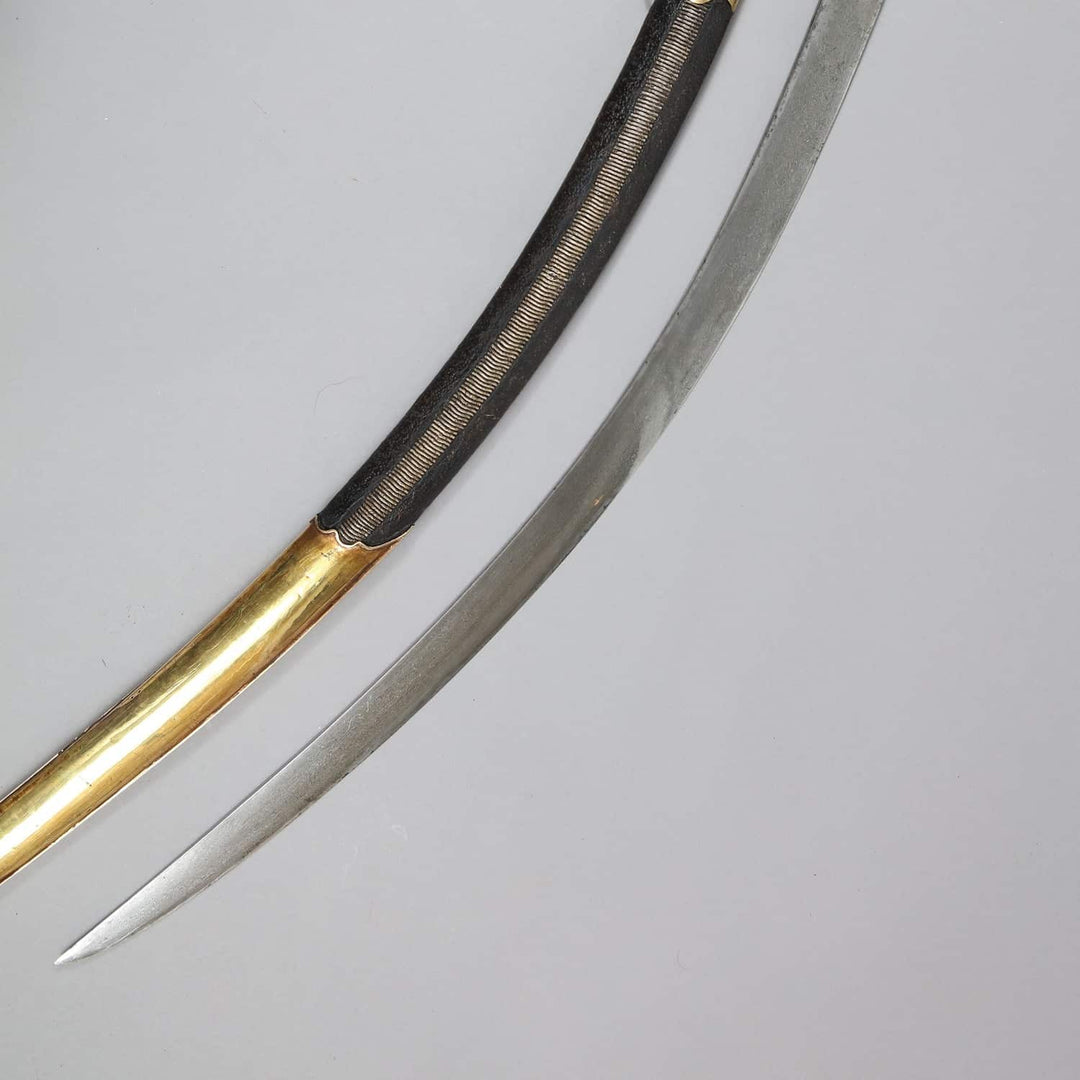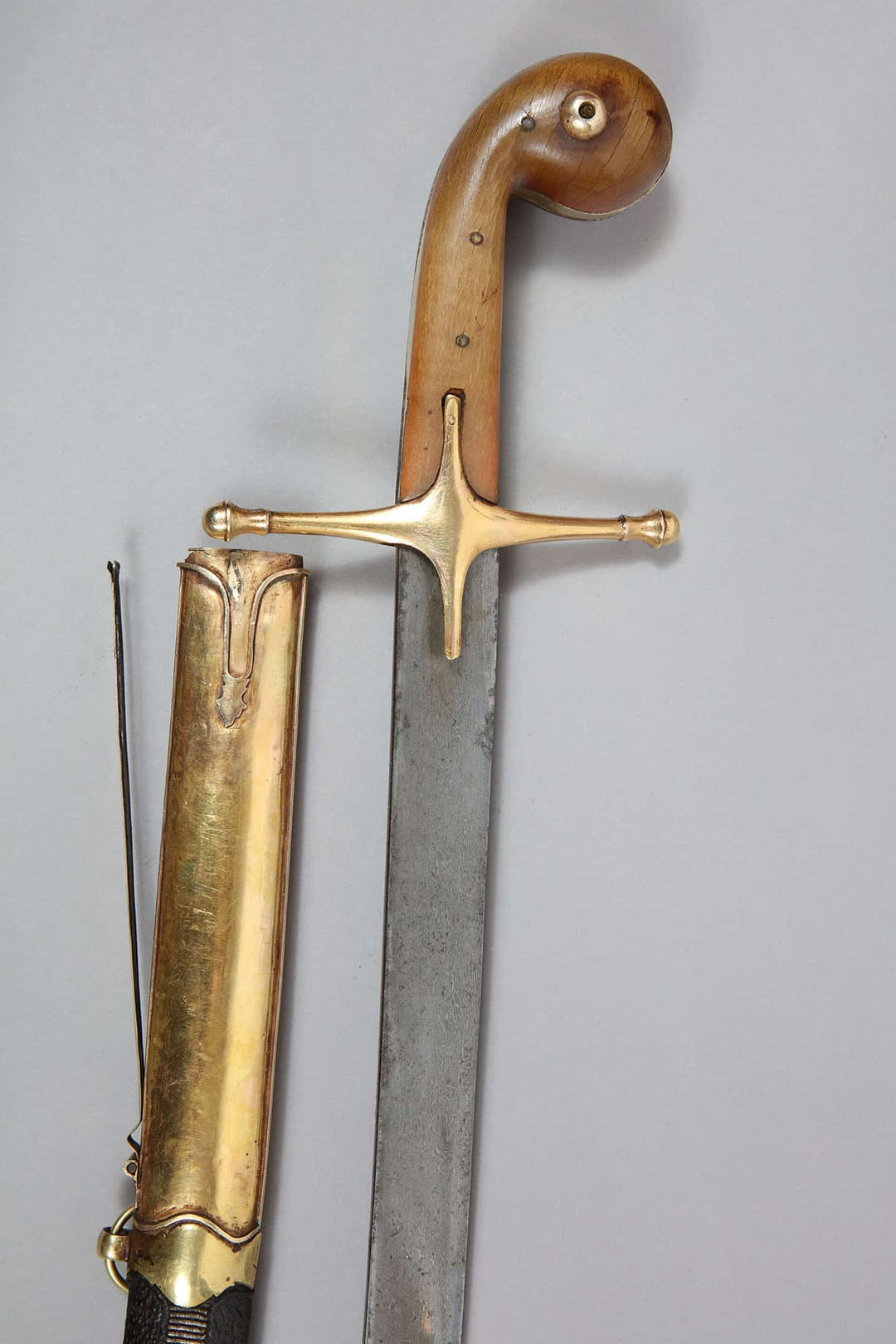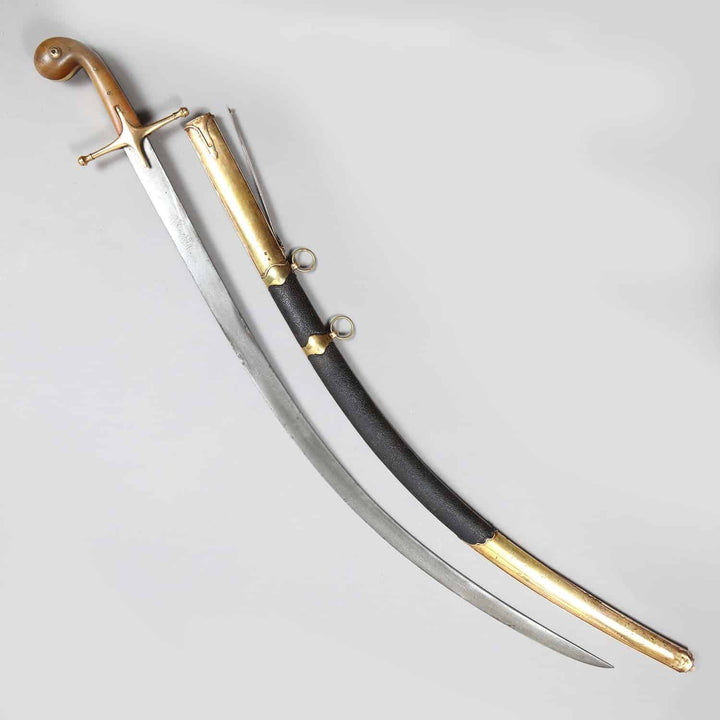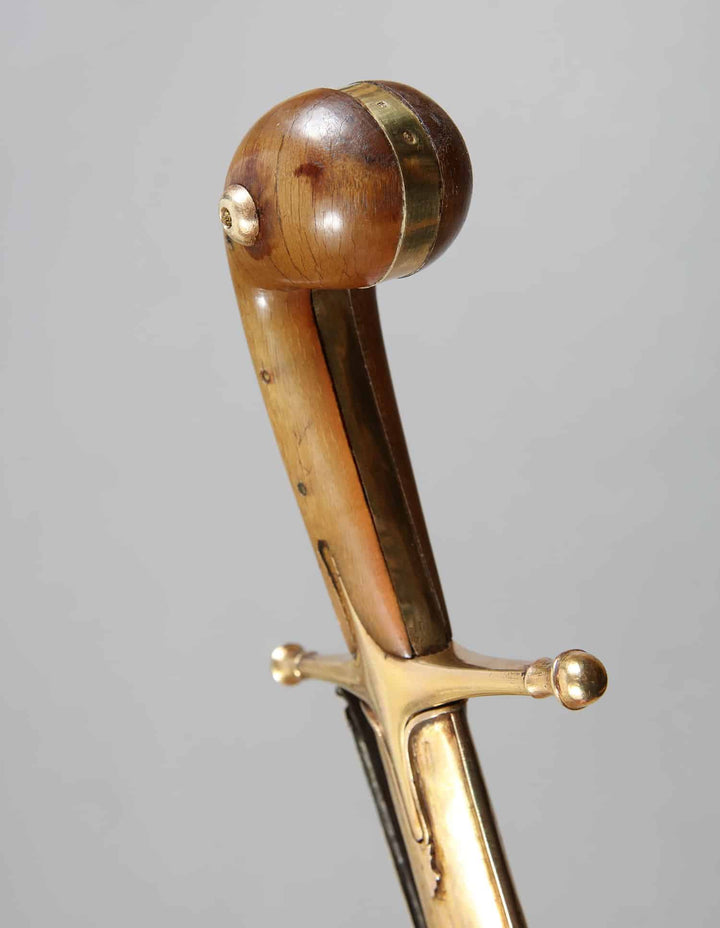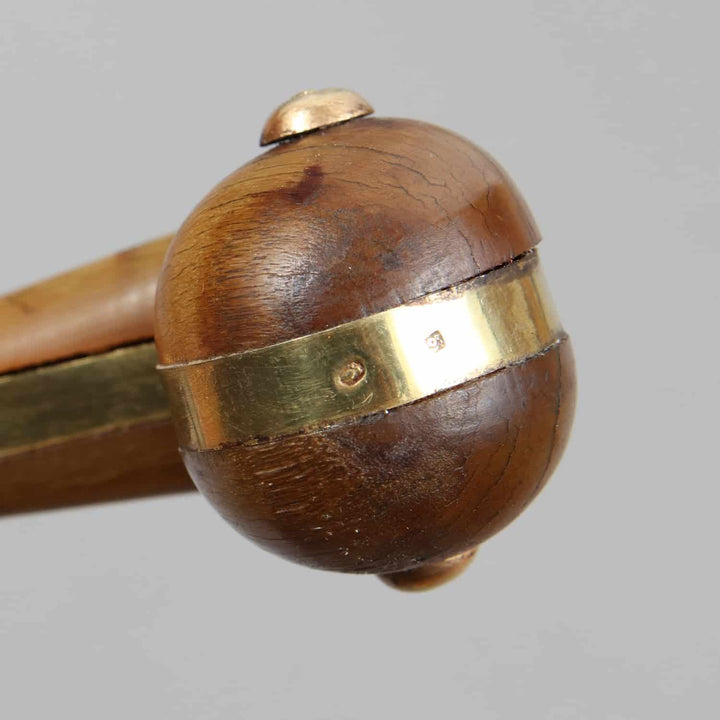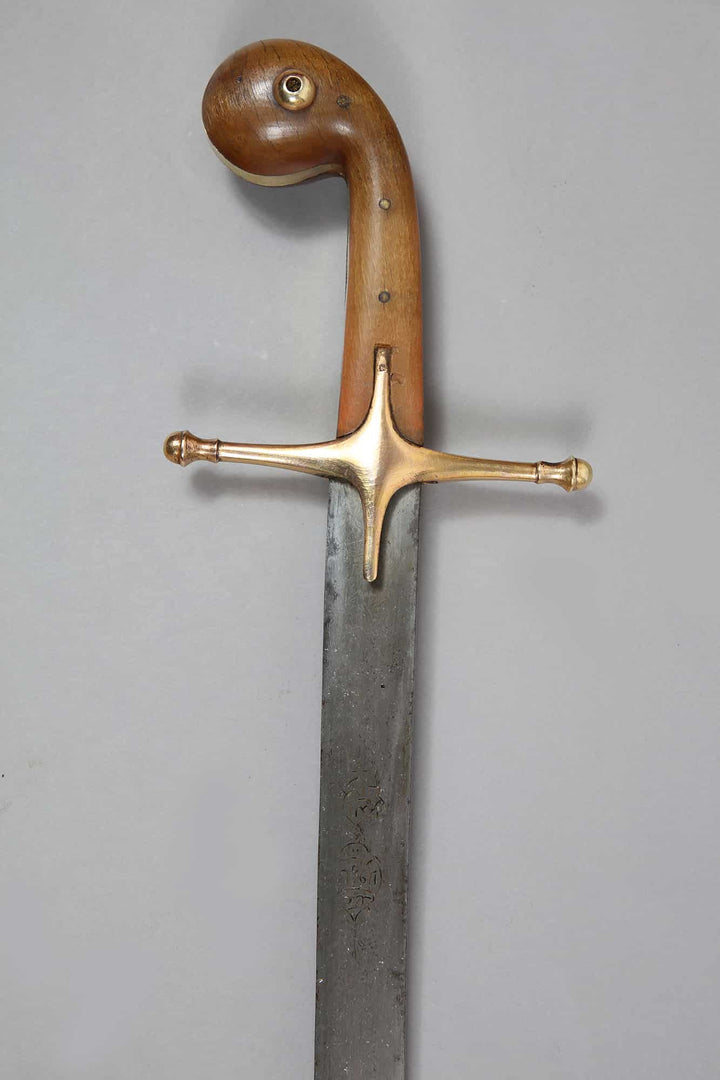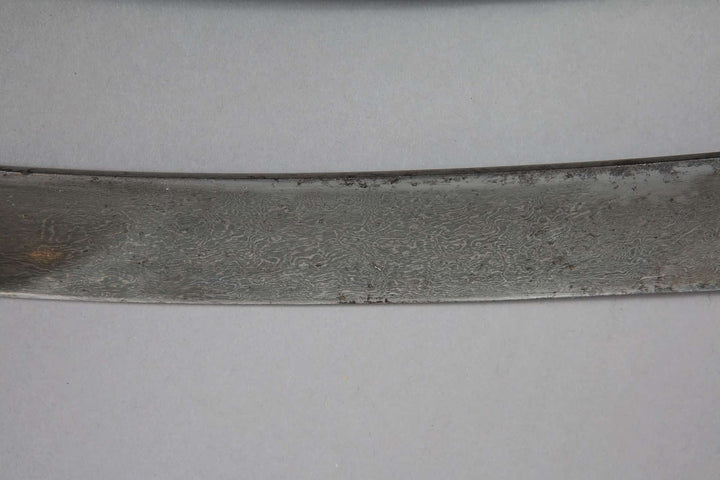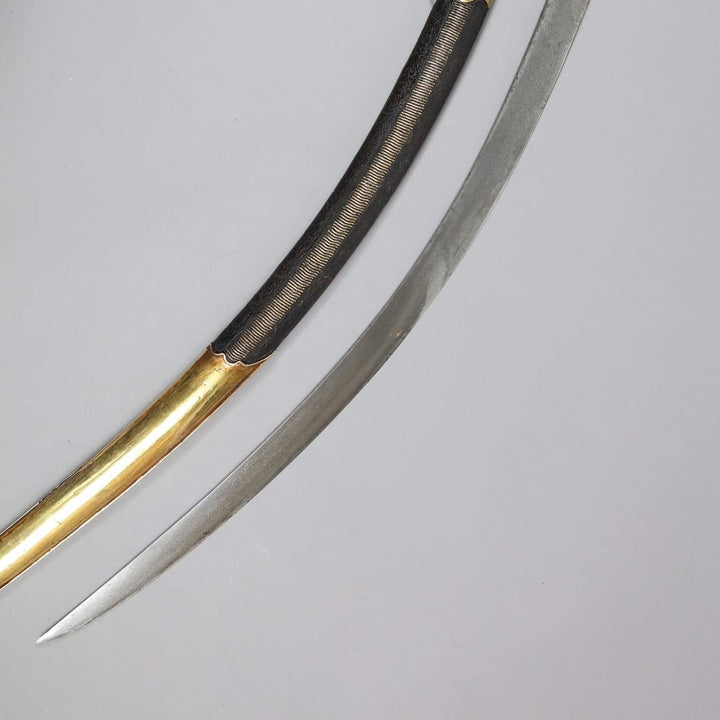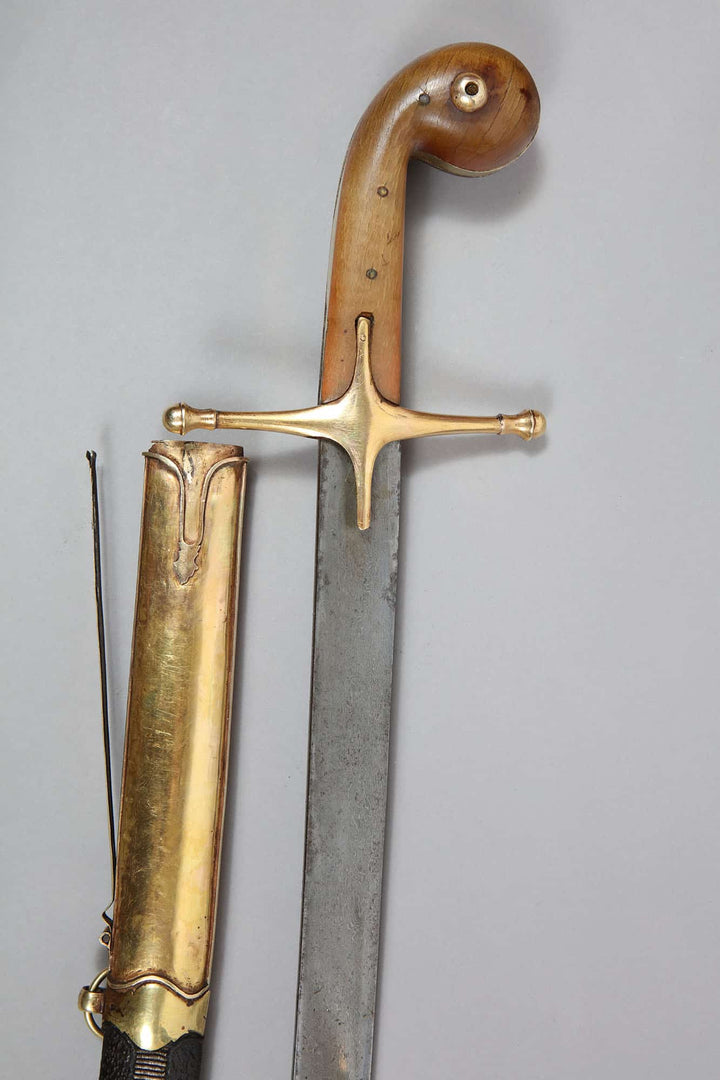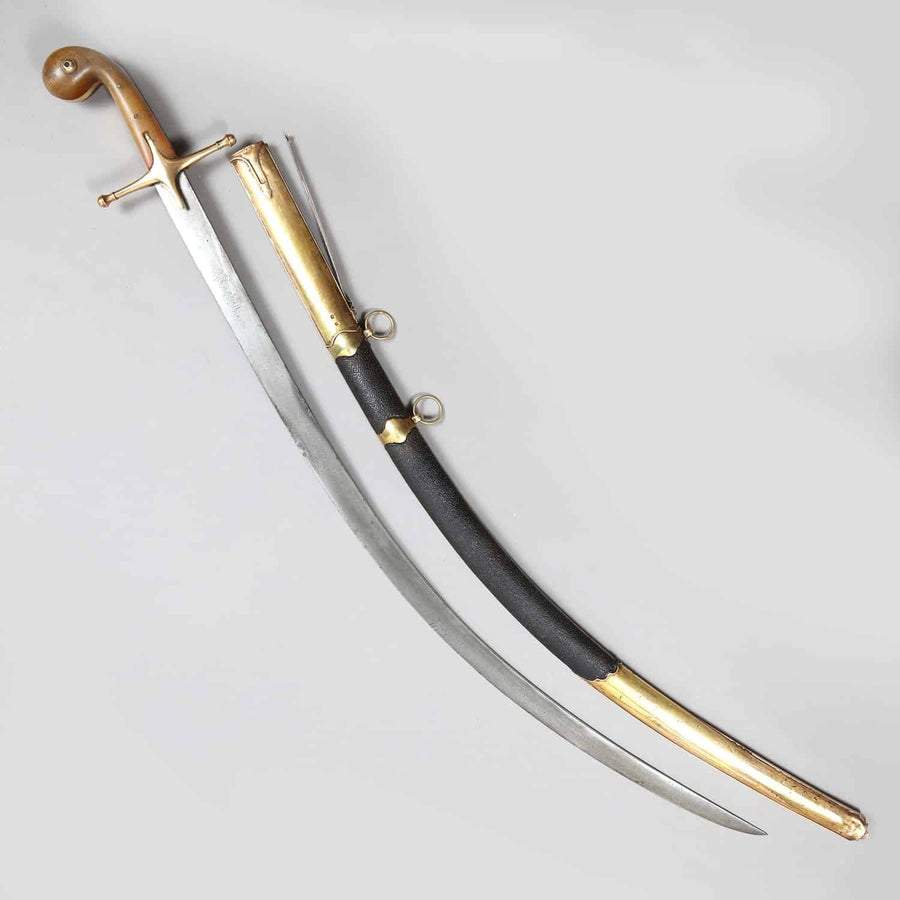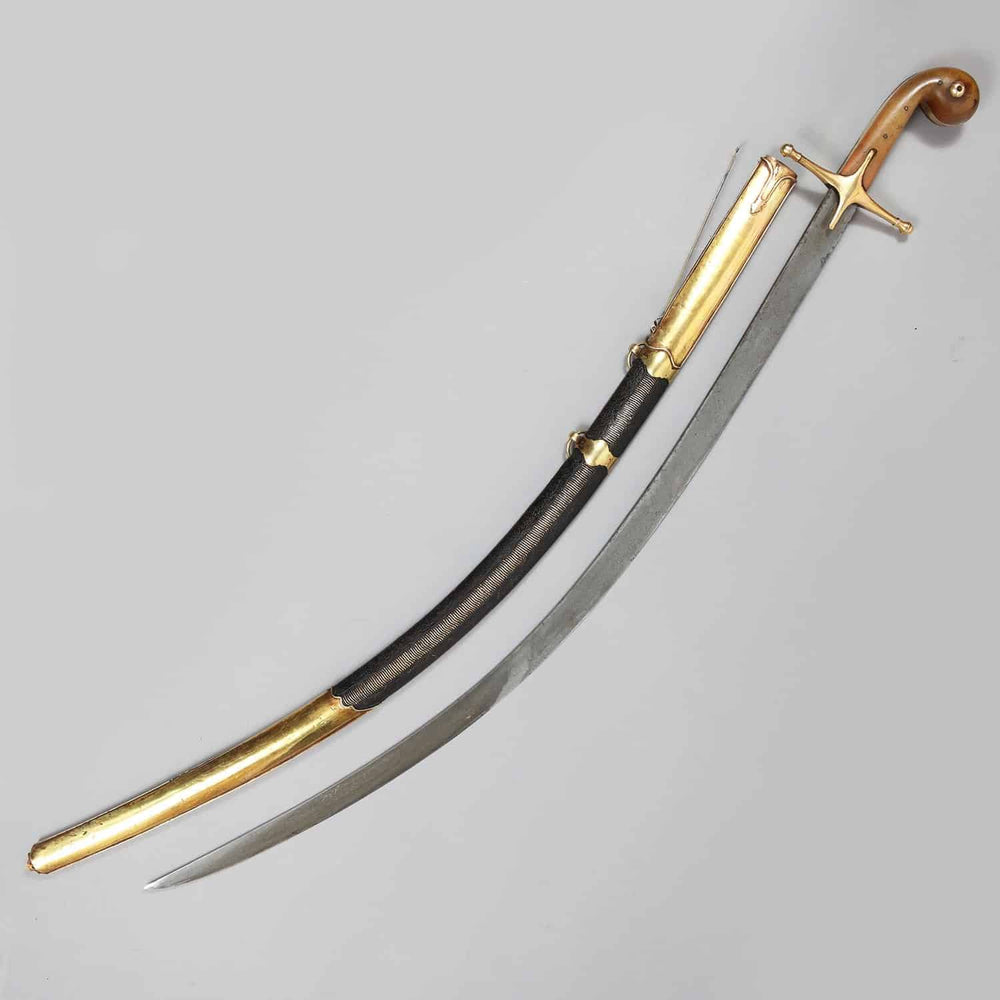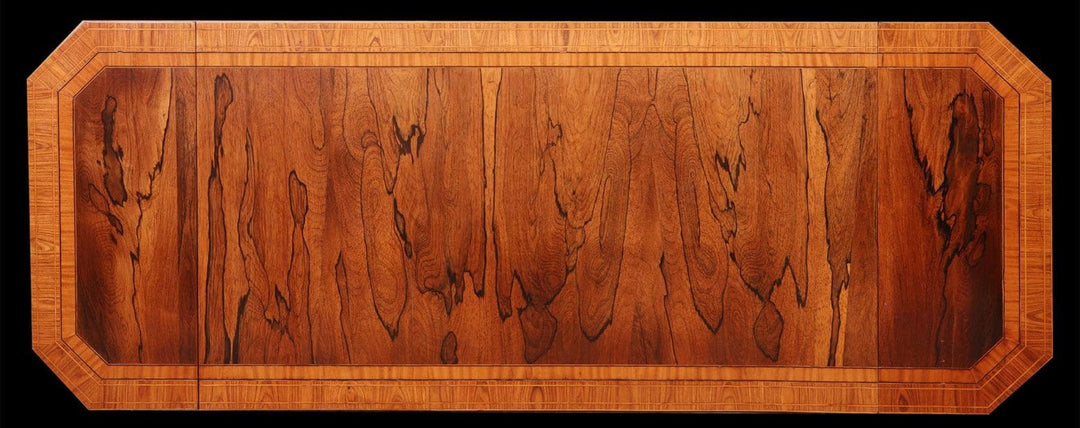‘MUHAMMAD’S LADDER’ SHAMSHIR WITH GOLD MOUNTS
This exceptional ‘Muhammad’s Ladder’ Shamshir hails from 18th-century Persia and epitomises the mastery of wootz steelwork during the period. Elegant and formidable, its unique ornamentation and historic blade make it a compelling collector’s sword of museum quality.
Origin: Persia
Date: 18th century
Material: Kirk Narduban wootz, horn, gold, and hide
Dimensions: Length: 98 cm without scabbard (83 cm blade / 15 cm hilt); 101 cm including scabbard
Condition: Excellent presentation overall; rare completeness with original gold-mounted scabbard and defined laddered wootz pattern.
Wrought with the renowned Kirk Narduban ‘Ladder’ wootz, this Persian Shamshir offers a striking example of the period’s technical innovation and artistic vision. Similar examples reside only in select national collections and reference works, including those catalogued by Dr Leo S. Figiel. The blade’s distinctive crystalline ladder motif, referenced in both Islamic and Mughal court tradition, was believed to symbolise a warrior’s path to paradise, adding profound meaning to its function and form.
Notable Features:
-
Exceptional craftsmanship:
- Blade forged from Kirk Narduban ‘Muhammad’s Ladder’ wootz, featuring dramatic silver and grey patterning against a dark background
- Traditional two-piece horn hilt with matte finish, enhancing grip and authenticity
- Gold-mounted quillon block and scabbard terminals, each stamped with inventory markings
-
Artistic and historical significance:
- Laddered blade structure draws from sacred Islamic iconography, said to embody the forty steps to heaven
- Etched cartouches present, including one with Urdu numerals likely denoting armoury inventory, and another referencing the blade’s creator with the term ‘Saaz’
-
Collecting value:
- Seldom found, especially in such complete condition with both blade and original gold-mounted sheath
- Sought-after by discerning collectors of Persian Arms and Armour and a highlight in any serious collection
-
Practical value:
- A rare opportunity to acquire an 18th-century Persian sword, ideal for prominent display, academic study, or as a centrepiece in fine arms collections
In all, this collectible sword stands as a testament to Persian ingenuity and the enduring appeal of Damascus/wootz steel artistry. A fine and evocative artefact, the ‘Muhammad’s Ladder’ Shamshir with gold mounts will elevate any curated array of historic weaponry.
At Nicholas Wells Antiques, we take great care in preparing each piece for delivery. As every antique is unique, custom packaging and handling are essential to ensure safe transit. Only once we have checked each item and wax polished them do we aim to ship your order. We will notify you by email once it has been dispatched. Delivery times may vary depending on the item and your location.
Please contact us for a tailored worldwide shipping quote.




